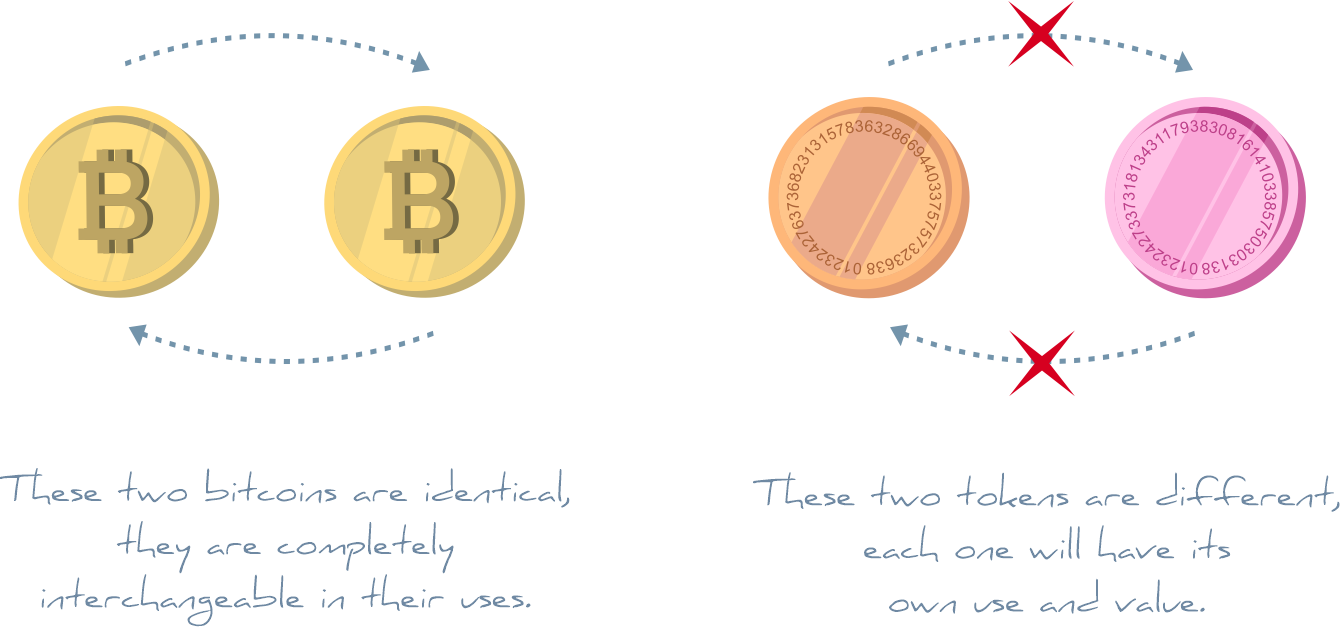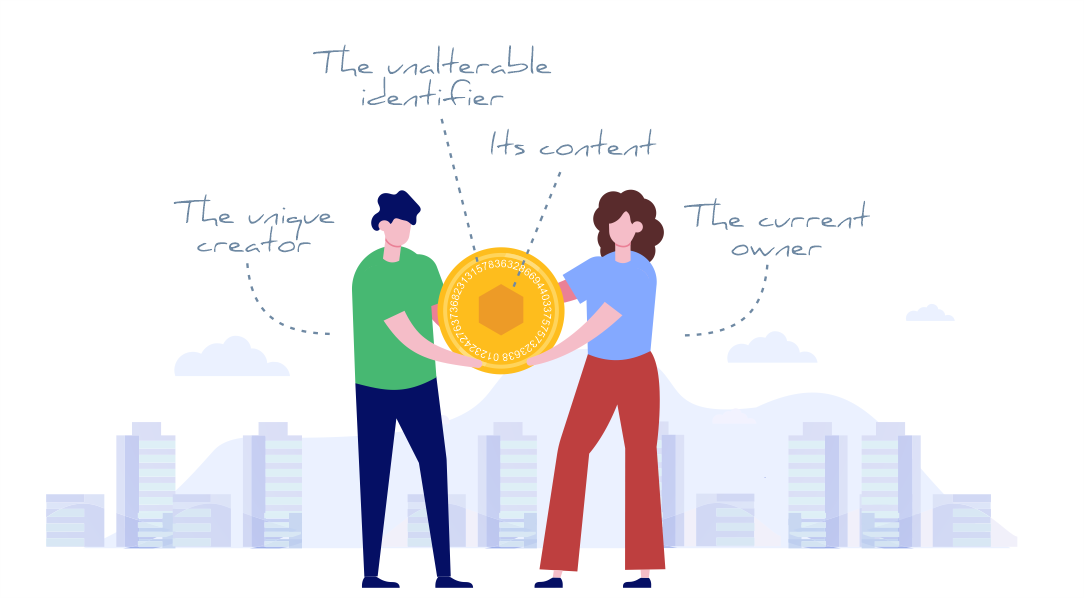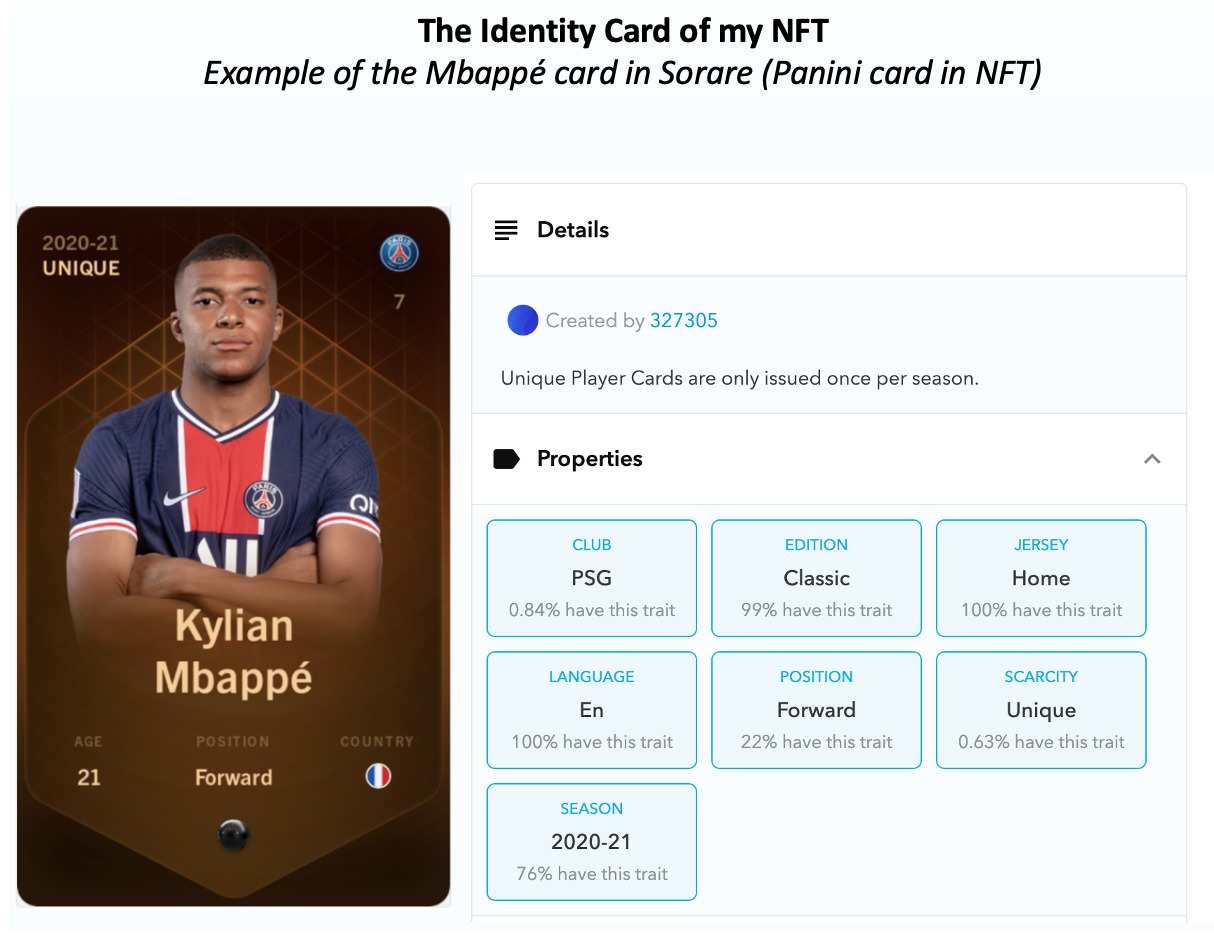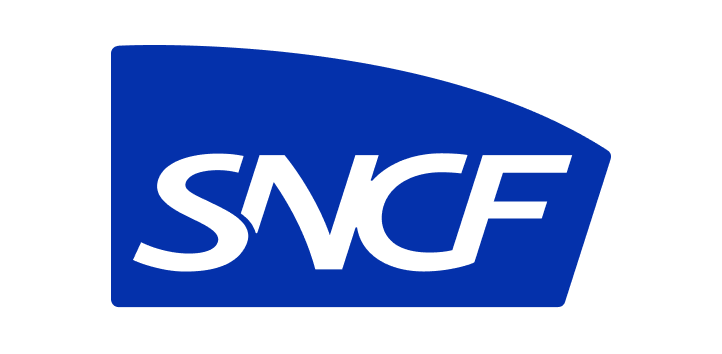NFTs, you for sure have heard about them. They have been the hot topic of 2021 whether it is in the arts market, gaming or collection wise. The NFT hype is far from being over as it re-invents the whole concept of digital ownership.
But so, what is an NFT? How to best understand and leverage this intriguing technology? Is this hype solely based on the speculative bubble surrounding cryptocurrencies? Stick with us, to learn more.
I — What is an NFT?
NFT stands for “Non Fungible Token”.
First things first, what is a token?
In the blockchain ecosystem a token is any asset which has the capacity of being digitally transferred between two people. These tokens are created on a blockchain, for example Ethereum and in function of their characteristics they have different classifications and usages.
What is fungibility?
Fungibility means that the individual units of an asset are interchangeable and indistinguishable from each other.
A currency is a classic example of a fungible asset. Ten euros will remain ten euros no matter the bill's series number.
On the other hand, an artwork is a non-fungible asset as a masterpiece painted by Picasso is not the same as one painted by Van Gogh. They are two completely different "chef d'oeuvre", distinguishable and not interchangeable.
So what is an NFT or Non Fungible Token?
NFTs are unique tokens that exist in limited quantity.
Meaning, that if you have 2 NFTs, these 2 digital objects will be inherently different and that blockchain technology will be able to prove and certify their unicity. In other words, an NFT is a unique token backed-up by a cryptocurrency network.
The NFT owner rests therefore assured to be the sole owner of the digital asset.
What is the difference between an NFT and a cryptocurrency?
As previously mentioned, currencies are by nature fungible, just as cryptocurrencies are. And it is this fungibility property that differentiates them from NFTs.
As detailed in the graphs below, holding one bitcoin instead of another is equivalent in terms of value. However, owning the unique Token A in blue is not the same as owning the unique Token B in pink.

NFTs can be of various types, in order to better understand them, let's go through their characteristics together.
The digital equivalent of the Panini cards: (Sorare, a project we will detail later on). Each NFT represents a card.
(source: Sorare)

A digital unique artwork (Available on Rarible, we will also detail this at a later stage) by the artist CryptoFallen

II — What are the characteristics of an NFT ?

As detailed previously, each NFT is unique. This unicity is defined by 4 main characteristics :
- A unique creator
- An unforgeable identifier
- Its content
- Its current owner
The unique creator
At the creation of the NFT, the creator will "sign" it. Indeed, thanks to a "smart contract" (a contract on a blockchain) the creator will start an event on the said blockchain, time-stamping and creating the NFT in an unforgeable manner.
This signature via a blockchain is the equivalent of an artist's signature on its art-piece: It allows to distinguish the original from the copies.
The unforgeable identifier
It is the NFTs' ID number. This sequence of numbers and letters is non-modifiable and unalterable allowing identification of an NFT on a blockchain.
To draw a parallel with the physical world, the ID corresponds to a series number.
Is the content of an NFT modifiable?
The identifier and the content of the NFT are two distinct elements. The identifier is defined at the creation of the token and is unalterable. The "content" is also defined at the creation of the NFT, however can be completely or in part modified throughout the life of the token.
Content wise, various formats exist: it can be an image, a video, a document or else. We will deep dive into certain use-cases.
In the majority of cases the content of the NFT will not be modifiable.
However, sometimes a modification may occur. The owner may qualify and stamp an information "on the NFT" within the blockchain. As an example, you could own an NFT corresponding to a physical object and qualify the content of the NFT with the current usage state of the object.
Hence, the value of the NFT does not reside in its content, but rather in his unique and unforgeable identifier.
The current owner
The current owner is the last characteristic serving to define an NFT. He will be identified throughout a transfer between two blockchain wallets. It is therefore possible to identify all the different owners of the NFT at any point in time thanks to time-stamping blockchain transfers.
With this ownership comes a series of rights but also obligations which will be elaborated on at a later stage.
III - Agreeing on the nature of an NFT

Now that we know what an NFT is, we can ask ourselves what grants it its value? Why would an NFT have more value than a picture on a phone?
In fact, if an NFT was only an image on a blockchain it would be fairly easy to replicate and to use the copy. So what grants it its value?
What makes a NFT valuable is a mutual agreement between the creator and the buyers on the said value.
Taking an artwork under an NFT form represented by an image as an example. The artwork itself could still be shared by anyone - it’s just an image - but only those that have the NFT can claim to have ‘the real art piece’.
To draw a parallel with today's art world: everybody could buy a print of a Monet masterpiece, but only one person can own the original.
In conclusion, it is this mutual agreement between the buyer community and the creator that grants the NFT its value. In other words, it is a mutual consensus on the nature of an NFT.
This proof of ownership can be used across a broad variety of fields such as arts, gaming... but also supply chain networks (we will come back to this when talking about Ownest).

So, what should you remember about NFTs?
NFT stands for "Non Fungible Token". It is a unique token operating on a blockchain, defined by 4 main characteristics: a unique creator, an unforgeable identifier, its content and a current owner.
This "digital unicity" and its properties have appealed to a broad range of domains such as video games, digital identity, licenses, certificates, arts and many more.
However, NFTs history cannot be limited to this recent "buzz" in certain activity sectors. With loads of bitter failures and surprises in the past, the future of NFTs is yet to be discovered. Our exploration of the NFT ecosystem is to be continued in our chapter 2 article "The history of NFTs".
Interested in the upcoming articles of our mini series? To receive them directly in your mailbox, click here!
![Cdiscount 2022 04 01 174830 mhxm]()
![Scnfbis]()
![Saint Laurent]() Company
Company



